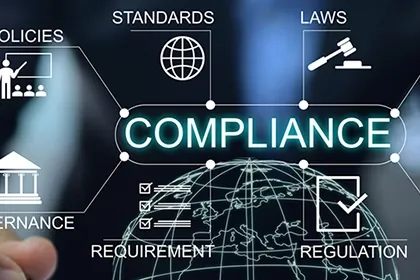Contracts, as the backbone of business and organizational relationships, play a key role in the performance and success of companies. The process of Contract Lifecycle Management (CLM) includes all stages of a contract, from drafting and negotiation to approval, execution, monitoring, and ultimately archiving. By digitizing this cycle through the Corporate Affairs and Contracts System, organizations can experience greater transparency, speed, and accuracy in contract management.
The Importance of Contract Lifecycle Management
Improper management of contracts can lead to problems such as breaches of obligations, legal disputes, and significant costs. For this reason, CLM is of great importance:
- Reduction of legal and financial risks
- Increased transparency in contract stages
- Assurance of both parties' compliance with obligations
- Enhanced productivity and reduced bureaucracy
Stages of the Contract Lifecycle
The contract lifecycle typically includes the following stages:
- Request and Draft: Creating a contract request and preparing an initial draft.
- Negotiation: Reviewing and amending contract terms by both parties.
- Approval and Signature: Approving the contract and officially recording it.
- Execution: Initiating the activities and commitments outlined in the contract.
- Monitoring and Management: Tracking the status of contract execution, documenting situations and potential changes.
- Extension or Termination: Deciding on the continuation, renewal, or termination of the contract.
- Archiving: Storing and accessing records for future reference.
The Role of the Corporate Affairs and Contracts System in CLM
The Corporate Affairs and Contracts System simplifies and enhances the management of CLM with its specially designed modules. Some of the functionalities of this system in the area of contract lifecycle management include:
- Digital registration and archiving of contracts
- Real-time tracking of contract status
- Automated reminders for deadlines and commitments
- Management of amendments and appendices
- Analytical reporting for managerial decision-making
Benefits of Contract Lifecycle Management with a Digital System
Digitizing CLM with the Corporate Affairs and Contracts System brings the following advantages:
- Reduction of human errors
- Quick access to contract records
- Increased efficiency and speed in workflow
- Improved clarity and reduced disputes
- Enhanced security of contract data
Applications of CLM in Organizations
Contract lifecycle management is not limited to commercial contracts; it is also applicable in various fields such as construction projects, contractor agreements, equipment purchase and sale contracts, legal contracts, and even employment contracts.
Conclusion
Contract Lifecycle Management (CLM) is a key tool for reducing risks, increasing transparency, and improving the productivity of organizations. Using the Corporate Affairs and Contracts System ensures that contracts are managed in an integrated and intelligent manner, enhancing strategic decision-making.
Frequently Asked Questions
Yes, the system provides the ability to generate analytical and comparative reports in various formats.
CLM is a comprehensive process for managing contracts from the drafting stage to archive.
Yes, from small companies to large and government organizations, they can benefit from CLM.



